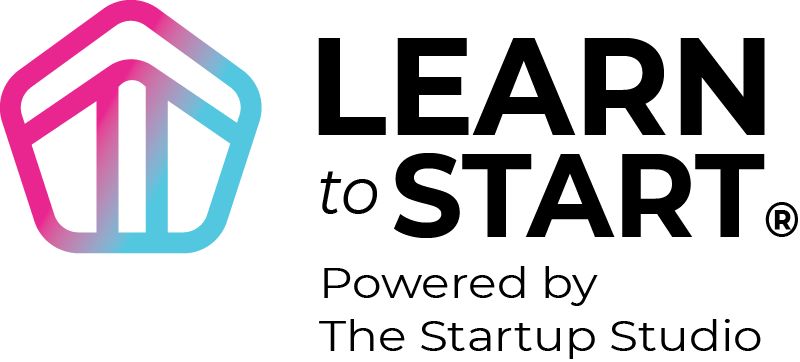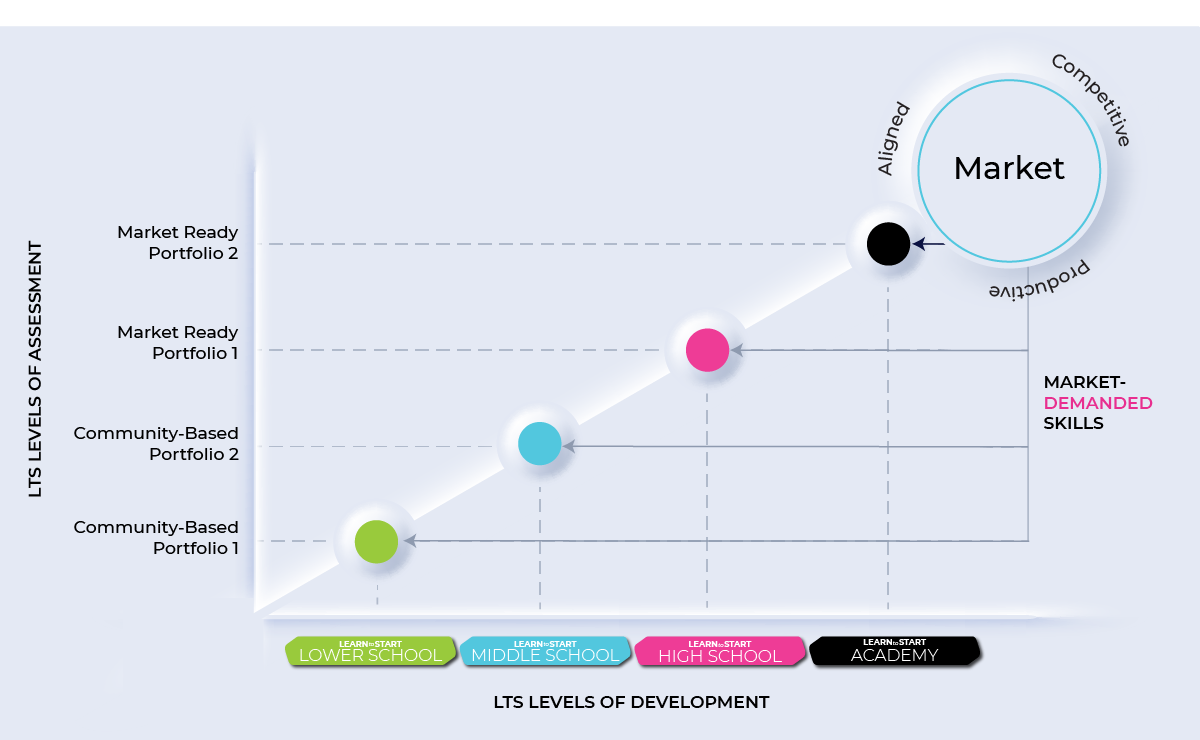A Reimagined Model of Learning through a
K-Market™ Journey of Development
A Reimagined Model of Learning through a K-Market™ Journey of Development
The Learn to Start Model has been designed to drive a pedagogy capable of developing the whole human being from the beginning of their educational career all the way through their entry into the market in a way that prepares them for market-demands aligned with their passions, interests, and capabilities.


The Learn to Start model starts with the four environments of story, failure, relationship, and mentorship. Story is your ability to tap into and communicate who you are and your ability to connect with the stories of others. Failure is your ability to take risks, experience failure, and embrace the learning experience of that failure. Relationship is your ability to collaborate and connect with others via empathy. Mentorship is your ability to seek out guidance from trusted individuals who have experienced things you have yet to experience.
Story
Story answers the LTS program questions of: Who am I? What can I do? How do I prove it? Students are developing confidence in sharing and listening to each others stories.
Failure
By having a classroom that embraces failure as a necessary part of the learning process, students are given the freedom to develop self-awareness, curiosity, and courage.
Relationship
In a LTS classroom, the focus is on encouraging students to talk to, learn about, and rely on each other so they build empathy and recognize the unique qualities and strengths of others.
Mentorship
Combining the roles of teacher and mentor allows instructors to switch into guidance mode where they help students figure out who they are, what they can do, and how they prove it.


Students continue to live in the LTS Model environments of Story, Failure, Relationship and Mentorship. Story is communicated through their portfolios. Failure is embraced as they test hypotheses by collecting evidence. Relationships are strengthened through the process of peer feedback. Mentorship is brought outside of the classroom by engaging with local industry partners.
In middle school, the LTS Model now expands to include the Assessment of Core Skills, and the LEARN and DEVELOP Stages.
The Assessment of Core Skills
Students are introduced to and begin tracking their development in the foundational process of developing the market-ready skills they will prove proficiency in to earn the market-ready certifications in high school.
LEARN Stage
Students develop their research skills and processes as they develop expertise in their communities of interest, identifying assumptions to create hypotheses to test as they build solutions to community-based problems.
DEVELOP Stage
Students execute on their research and solutions. They learn the iterative process of solution creation and learn how to build a desirable value proposition.


Students are introduced to the final layers of the model which are the BRAND Stage, Test Metrics, and Start. As students develop their solutions, they learn how to communicate about them by creating branded content and test them using the three test metrics of sustainability, efficiency, and profitability. They START by entering the market.
Outcomes
Student are prepared to leave school as market-ready individuals equipped with the agency necessary to control their lives and their tangible proof of value through their portfolio and certifications.
3 Questions
Students answer three questions (Who am I? What can I do? How can I prove it?) while building their portfolios and leveraging their passions and interests to enter the marketplace as producers rather than merely consumers.
Market-Ready
Learn to Start students certify in the employability skills currently demanded by industry enabling them to transfer their skills as they pivot through their careers.


